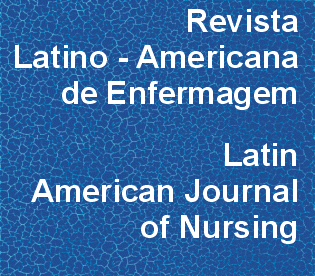Labor stimulation with oxytocin: effects on obstetrical and neonatal outcomes
DOI:
https://doi.org/10.1590/1518-8345.0765.2744Abstract
Objective: to evaluate the effects of labor stimulation with oxytocin on maternal and neonatal outcomes. Method: descriptive and analytical study with 338 women who gave birth at a tertiary hospital. Obstetric and neonatal variables were measured and compared in women submitted and non-submitted to stimulation with oxytocin. Statistics were performed using Chi-square test, Fisher exact test, Student t-test; and crude Odds Ratio with 95% confidence interval were calculated. A p < 0.05 was considered statistically significant. Results: stimulation with oxytocin increases the rates of cesarean sections, epidural anesthesia and intrapartum maternal fever in primiparous and multiparous women. It has also been associated with low pH values of umbilical cord blood and with a shorter duration of the first stage of labor in primiparous women. However, it did not affect the rates of 3rd and 4th degree perineal lacerations, episiotomies, advanced neonatal resuscitation, 5-minute Apgar scores and meconium. Conclusion: stimulation with oxytocin should not be used systematically, but only in specific cases. These findings provide further evidence to health professionals and midwives on the use of oxytocin during labor. Under normal conditions, women should be informed of the possible effects of labor stimulation with oxytocin.Downloads
Download data is not yet available.
Downloads
Published
2016-01-01
Issue
Section
Original Articles
License
RLAE’s authorship concept is based on the substantial contribution by each of the individuals listed as authors, mainly in terms of conceiving and planning the research project, collecting or analyzing and interpreting data, writing and critical review. Indication of authors’ names under the article title is limited to six. If more, authors are listed on the online submission form under Acknowledgements. The possibility of including more than six authors will only be examined on multicenter studies, considering the explanations presented by the authors.Including names of authors whose contribution does not fit into the above criteria cannot be justified. Those names can be included in the Acknowledgements section.
Authors are fully responsible for the concepts disseminated in their manuscripts, which do not necessarily reflect the editors’ and editorial board’s opinion.
How to Cite
Hidalgo-Lopezosa, P., Hidalgo-Maestre, M., & Rodríguez-Borrego, M. A. (2016). Labor stimulation with oxytocin: effects on obstetrical and neonatal outcomes . Revista Latino-Americana De Enfermagem, 24, e2744-. https://doi.org/10.1590/1518-8345.0765.2744



